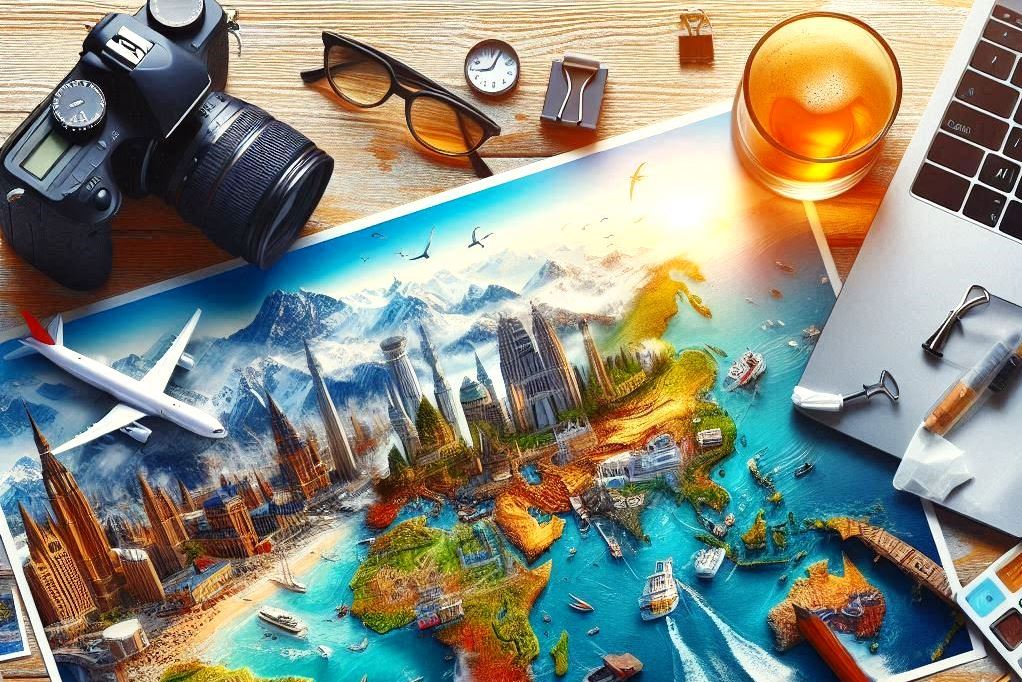In a world that often prioritizes speed and efficiency, the concept of slow travel offers a refreshing alternative. Slow travel emphasizes taking your time to truly experience and connect with a destination, rather than rushing through it. This approach allows you to immerse yourself in local culture, build meaningful connections, and gain a deeper appreciation for the places you visit. Here’s a guide to embracing the art of slow travel and making the most of your journey.

1. Embrace the Journey: The Philosophy of Slow Travel
What is Slow Travel?
Slow travel is about savoring the journey rather than focusing solely on reaching a destination. It’s an approach that values quality over quantity, encouraging travelers to spend more time in fewer places and engage more deeply with their surroundings.
Benefits of Slow Travel
- Deeper Cultural Immersion: By spending more time in one place, you can experience the local culture more authentically.
- Less Stress: A slower pace means less rushing and more relaxation, leading to a more enjoyable travel experience.
- Sustainable Practices: Slow travel often involves using local transportation and staying in eco-friendly accommodations, reducing your overall carbon footprint.
2. Choosing Your Destination: Where to Go Slow
Select Fewer Destinations
Rather than cramming numerous locations into a single trip, focus on a few key places. This allows you to explore each destination more thoroughly and enjoy a richer experience.
Opt for Lesser-Known Spots
Consider visiting off-the-beaten-path destinations that are not as crowded with tourists. These locations often offer a more genuine experience and a chance to discover hidden gems.
Examples of Slow Travel Destinations
- The Italian Countryside: Explore charming villages, local wineries, and scenic landscapes at a leisurely pace.
- Japanese Countryside: Experience traditional culture and natural beauty in rural Japan, away from the bustling cities.
- Small Towns in New England: Enjoy the quaint charm and historical significance of small towns like Woodstock, Vermont or Newport, Rhode Island.
3. Slow Down Your Pace: How to Travel Slowly
Use Local Transportation
Instead of flying between destinations, consider taking trains, buses, or even bicycles. This not only reduces your carbon footprint but also allows you to see more of the countryside and interact with locals.
Stay Longer in One Place
Book accommodations for longer stays, such as vacation rentals or guesthouses. This gives you more time to explore the area and settle into the local rhythm.
Engage in Local Activities
Participate in activities that allow you to connect with the local culture, such as cooking classes, guided tours by locals, or community events.
4. Immerse Yourself in Local Culture
Learn the Language
Even learning a few basic phrases can greatly enhance your experience and interactions with locals. It shows respect and helps you navigate the area more effectively.
Eat Local Cuisine
Dine at local restaurants and try regional dishes. Food is a vital part of understanding a culture, and eating where the locals eat offers a more authentic experience.
Participate in Local Traditions
Engage in local customs and traditions, whether it’s attending a festival, joining a local workshop, or simply observing daily life.
5. Mindful Exploration: Tips for Enjoying the Journey
Practice Mindfulness
Take time to truly observe and appreciate your surroundings. Whether it’s the architecture of a historic building, the beauty of a natural landscape, or the sounds and smells of a local market, mindfulness can enhance your travel experience.
Document Your Journey
Keep a travel journal or take photographs not just of landmarks but of everyday moments. This helps you reflect on your experiences and remember the little details that make your trip special.
Disconnect to Reconnect
Limit your use of digital devices and social media. Instead, focus on being present in the moment and enjoying the experiences around you.
Conclusion
The art of slow travel is about embracing a more deliberate and immersive way of experiencing the world. By slowing down, choosing fewer destinations, and engaging deeply with local cultures, you can transform your travels into more meaningful and memorable experiences. So, next time you plan a trip, consider adopting a slower pace and savoring every moment of the journey. In doing so, you’ll find that the journey itself becomes as rewarding as the destination.